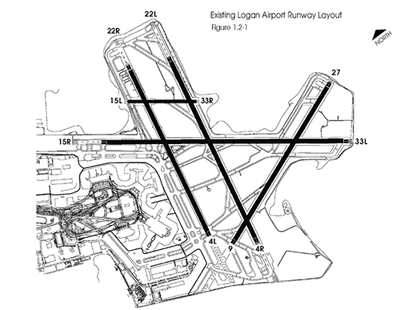


Because of its larger size, a regional community airport can accommodate a wider range of aircraft, from small prop planes to regional jets that seat no more than 20 passengers to larger three-engine jets, such as the Boeing 727, capable of seating up to 189 passengers. A terminal building, with a pilot's lounge, restrooms, vending area and conference rooms, is often available, as is a fuel farm to provide either kerosene-based jet fuel or aviation gasoline (avgas), which is similar to automobile gasoline (mogas) but with some additives to make it perform better in spark-ignited internal combustion engines common in light aircraft. Such a facility usually has multiple Tee hangars - simple metal enclosures - and tie-down spots for permanently based or visiting pilots to house or stow their aircraft. Small community airports, on the other hand, may supplement a single airstrip with a few hangars and facilities to train student pilots, although they usually don't have operating control towers.Ī regional community airport offers more, including a control tower and an automated weather observation system to provide pilots with real-time weather data. These so-called rural airstrips often serve just one or two pilots and don't have any other structures beyond the crude runway itself. Some are nothing more than a strip of grass, dirt or pavement placed in the middle of a farm or field. In reality, many airports don't fit this description. We imagine massive sites covering hundreds of acres and filled with hangars, terminals, control towers and parking garages. Most of us think AIRPORT, not airport, when we hear the term. Luckily, our journey over the next few pages will give us a glimpse into the hidden world of airports without all of the attendant stress and nail-biting. This is not a position for the light-hearted and is stressful with long hours." 11 attacks, as well as capricious weather patterns, and you can see why job descriptions for airport managers often contain these kinds of descriptions: "You must have strong leadership and organizational skills, as well as excellent communication and interpersonal skills. Throw in security concerns that arose after the Sept. And pilots and other crew members need runways, aircraft fuel, air traffic information, facilities for aircraft storage and maintenance, and places to relax while on the ground. Air-freight companies need space for loading and unloading cargo airplanes. Airlines need space for airplanes, facilities for routine maintenance, jet fuel and places for passengers and flight crews while on the ground. In addition to those activities, airports must also provide the resources necessary to care for a fleet of commercial aircraft. And various municipal-like departments handle administrative duties, ranging from human resources and public relations to legal and finance. Police and fire squads protect life and property. Waste removal crews collect trash from airport facilities and airplanes. A governing body provides strategic direction and oversees day-to-day management. In many ways, a modern airport operates like a city. That's a lot of planes, a lot of passengers and a lot of airport personnel to make sure everything runs smoothly. Moving those people to their ultimate destinations requires 34 different airlines, which collectively make up the airport's 2,500 daily arrivals and departures. That's almost 20 times the number of people living in Atlanta itself and the same number of people living in a sizable country, say Ethiopia or Vietnam. For example, Hartsfield-Jackson Atlanta International Airport handles nearly 100 million passengers a year. "The Memory Trap," an espionage thriller by British author Anthony Price, contains this wry quote about airports: "The Devil himself had probably re-designed Hell in the light of the information he had gained from observing airport layouts." Whether you agree with Price or not (we suppose some people might find Heaven in the frenetic hub of their favorite airline), the observation captures the essence of the modern flying field: its complexity, its immensity and, of course, its density of people.Īny major airport has lots of customers, most of them passengers.


 0 kommentar(er)
0 kommentar(er)
